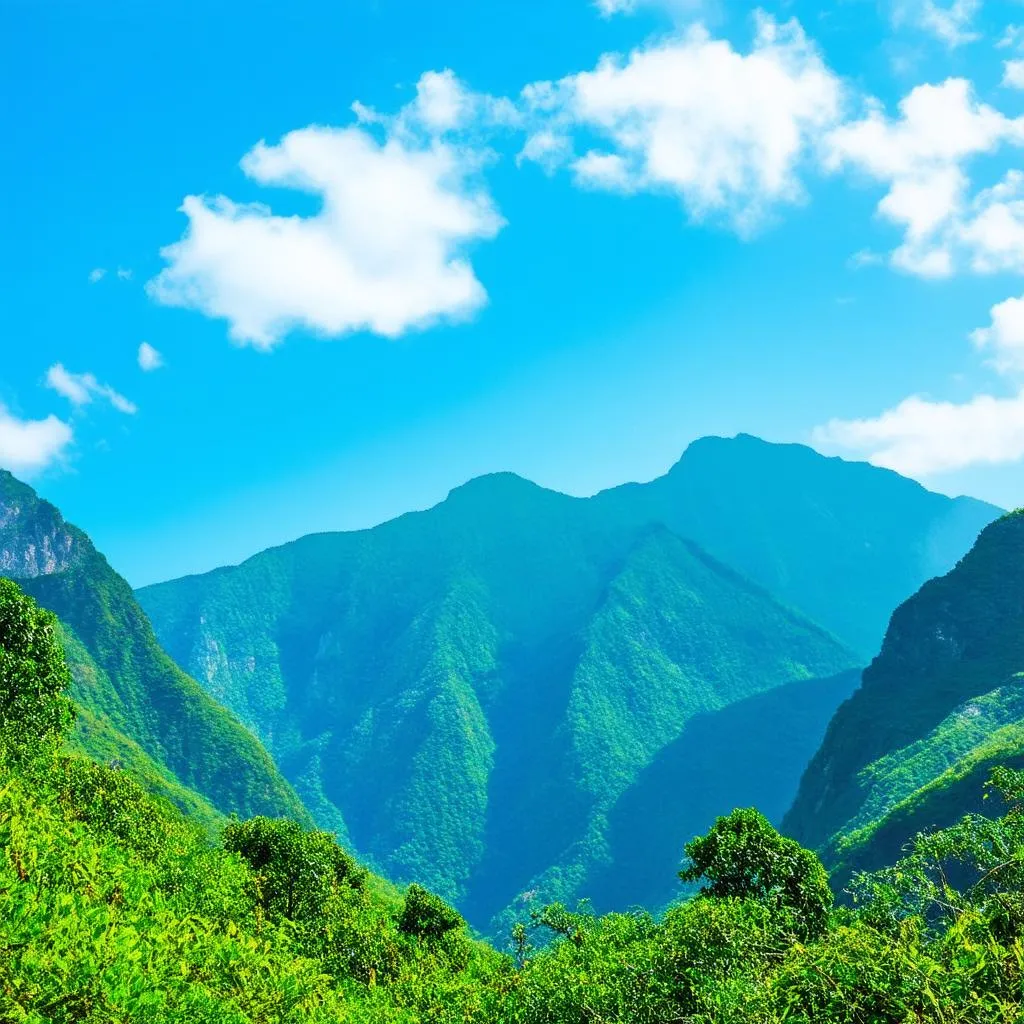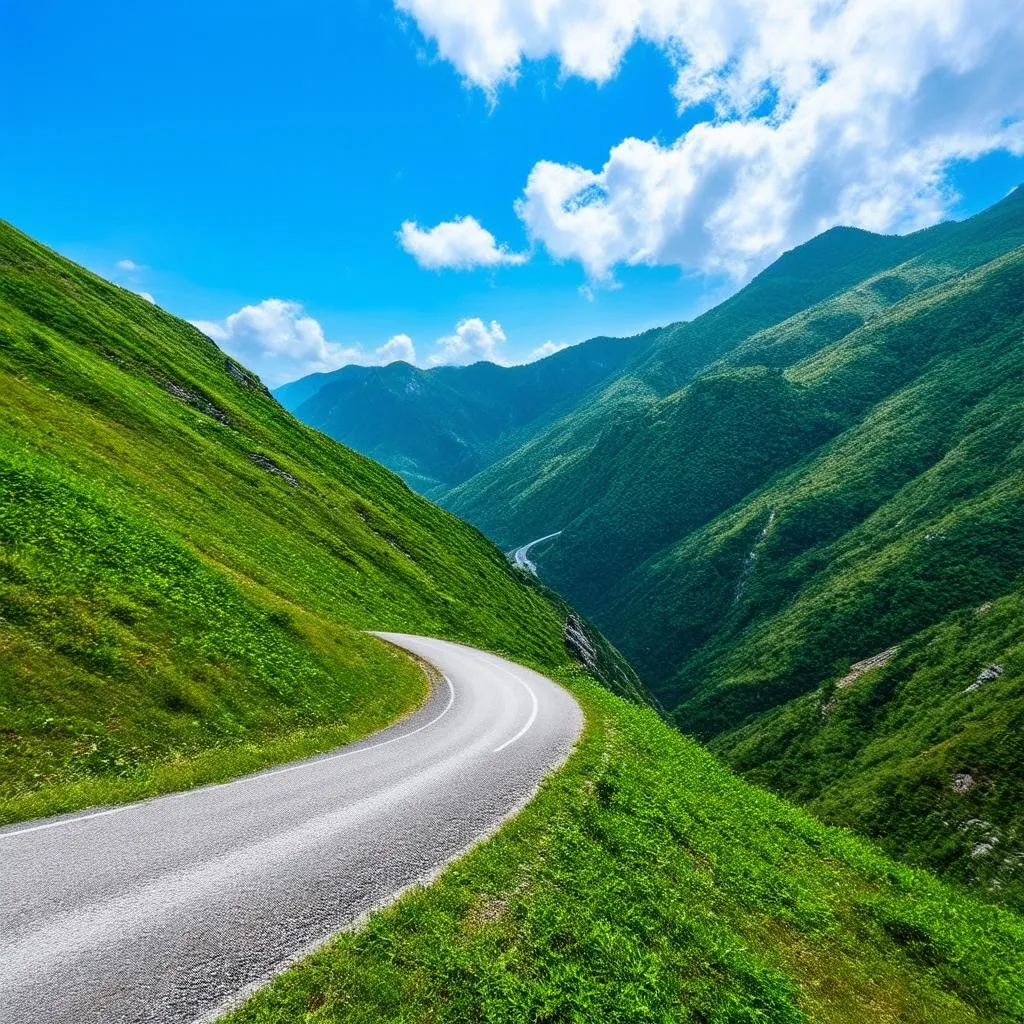“The journey of a thousand miles begins with a single step.” This Lao Tzu quote rings true, especially when planning a trip to Ha Giang, Vietnam’s final frontier. But before you pack your bags and book that flight, the question arises: When is the best time to experience the magic of Ha Giang?
Unveiling Ha Giang’s Charm: A Seasonal Guide
Ha Giang, nestled in the heart of Vietnam’s northern highlands, boasts dramatic landscapes, winding roads, and vibrant ethnic cultures. But like a chameleon, Ha Giang transforms with each season, offering unique experiences throughout the year.
Spring (February – April): A Canvas of Colors
Spring paints Ha Giang in vivid hues. The peach and plum blossoms explode in a riot of pink and white, blanketing the valleys in ethereal beauty. This season, particularly March, is perfect for photographers and nature enthusiasts.
Don’t miss:
- Trekking through the flower valleys of Quan Ba and Yen Minh.
- Experiencing the vibrant “Tet Nhat” celebrations of the Tay and Dao ethnic groups.
Summer (May – August): Embrace the Green Symphony
Summer in Ha Giang is a symphony of green. Lush rice terraces cascade down the slopes, shimmering emerald under the sun. While occasional downpours are characteristic, they only amplify the region’s raw beauty.
Don’t miss:
- Cycling the Ma Pi Leng Pass, hailed as one of Southeast Asia’s most scenic routes.
- Witnessing the daily life of the Hmong people in Dong Van Karst Plateau Geopark.
Autumn (September – November): A Golden Harvest
Autumn drapes Ha Giang in golden hues. The rice terraces ripen, creating breathtaking landscapes that stretch as far as the eye can see. This is also the season of festivals, adding a cultural layer to your adventure.
Don’t miss:
- The Buckwheat Flower Festival in October, where fields turn white with delicate blossoms.
- Exploring the ancient King of Hmong’s Palace in Sa Phin.
Winter (December – January): A Realm of Mist and Majesty
Winter in Ha Giang is mystical. A blanket of mist often shrouds the mountains, creating an ethereal atmosphere. While temperatures can drop, the experience is truly unique.
Don’t miss:
- Witnessing the frozen waterfalls and snow-capped peaks, a rare sight in Vietnam.
- Exploring the Lung Cu Flagpole, the northernmost point of Vietnam, often enveloped in clouds.
Planning Your Ha Giang Adventure: Essential Tips
- Motorcycle or car rental is highly recommended to explore the region at your own pace.
- Pack for all types of weather, including rain gear, warm clothing, and sunscreen.
- Be respectful of local customs and traditions.
- Support local businesses and communities.
Frequently Asked Questions
Q: Is it possible to visit Ha Giang during the rainy season?
A: While rain is common from May to August, it doesn’t necessarily hinder travel. The landscapes are lush, and the experience can be quite refreshing.
Q: What is the best way to get to Ha Giang?
A: Overnight buses from Hanoi are a popular option. Alternatively, you can rent a motorbike or car from Hanoi for a more adventurous journey.
Q: Are there any accommodation options in Ha Giang?
A: Yes, Ha Giang offers a range of accommodation options, from budget-friendly homestays to comfortable hotels.
 Mountains in Ha Giang
Mountains in Ha Giang
 Winding road in Ha Giang
Winding road in Ha Giang
Ha Giang Awaits: Start Planning Your Unforgettable Journey
Whether you’re captivated by blooming flowers, cascading rice terraces, or mist-shrouded mountains, Ha Giang has something to offer every traveler. Now that you’re equipped with the knowledge of when to visit, start planning your unforgettable adventure and discover the magic that awaits in Vietnam’s final frontier.
For more insights and travel inspiration, explore travelcar.edu.vn and unlock the secrets of Ha Giang and beyond.